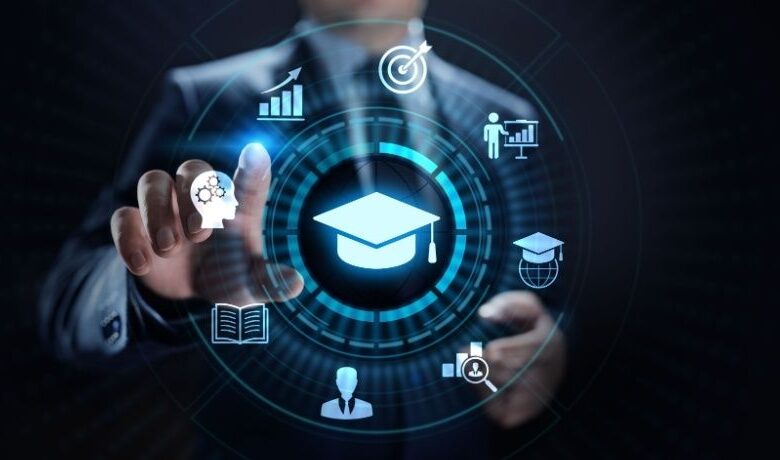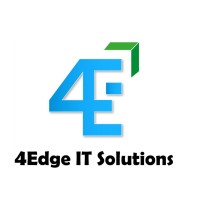eLearning And Emerging Technologies: The Road Ahead

eLearning And Emerging Technologies
Previously, we discussed how the emergence of eLearning and new technology is drastically changing the face of education. We examined five major themes that will influence education going forward: gamification, immersive learning with Augmented Reality (AR)/Virtual Reality (VR), microlearning and mobile learning, Artificial Intelligence (AI)-powered customization, and learning analytics. Let’s explore each of these eLearning-related emerging technologies in more detail today, going over concrete instances, data, and possible advantages for both instructors and learners.
1. Microlearning And Mobile Learning: Bite-Sized Knowledge On The Go
Challenge
Long lectures and large datasets are common features of traditional learning methodologies, which can overwhelm learners with a deluge of information.
Solution
Microlearning addresses this by providing knowledge in brief, easily assimilated units (five to ten minutes) that are available on mobile devices.
Benefits
- Enhanced engagement
Learning in short chunks works very well with hectic schedules, improving concentration and retention. - Accessibility
During breaks or commutes, learners can access knowledge at any time and from any location.
Better application of knowledge
Just-in-time learning is made possible via microlearning, which enables learners to apply information to actual circumstances. - Statistics
The microlearning market is poised for substantial growth, with a projected expansion of $1.33 billion between 2022 and 2027, at a CAGR of 10.57%. This surge is driven by factors like increasing smartphone penetration, a growing focus on employee development, and the demand for efficient knowledge transfer. The market is segmented by industry, component, and geography, offering insights for businesses looking to capitalize on this trend. - Example
To stay up to speed on medical research, consider a doctor who uses microlearning modules on their phone to obtain the most recent updates during lunch breaks.
2. AI: Adaptive Learning And Personalization
Difficulty
Individual learning styles and demands are sometimes ignored in favor of a “one-size-fits-all” approach in traditional learning.
Solution
AI uses learner data analysis to tailor educational experiences. It makes recommendations for individualized learning routes, pinpoints knowledge gaps, and adjusts learning difficulty in response to performance.
Advantages
- Enhanced efficacy
AI maximizes information retention and skill development by customizing learning to each learner’s strengths and shortcomings. - Enhanced engagement
Learners are motivated and engaged when they receive personalized learning that meets their unique requirements and learning preferences. - Example
An eLearning platform uses quizzes to find knowledge gaps, suggests courses based on a user’s prior performance, and modifies difficulty to keep learning tough but interesting.
3. Gamification: Bringing Interest And Fun To Learning
Difficulty
Traditional education can occasionally be tedious and uninteresting, which lowers motivation and leads to disengagement.
Solution
Learning programs may be made more like games by incorporating gamification components like badges, points, leaderboards, and challenges.
Advantages
- Enhanced motivation
Gamification creates a sense of success and competitiveness that encourages learners to actively engage. - Better information processing and retention
Learning becomes more engaging and participatory when it is gamified, which enhances learning retention. - Studies
Gamification in education can boost engagement but its impact varies. Research shows that personality traits influence how students respond to game-like elements. While it can enhance learning for some, others may not benefit as much. For instance, a language-learning program has leaderboards to promote competition and monitor progress, badges for achieving grammatical proficiency, and points for finishing exercises and tests.
4. Immersive Learning Experiences With AR And VR
Challenge
Learners may not be completely immersed in difficult topics or useful skills using traditional learning tools.
Solution
While Virtual Reality delivers completely immersive learning settings, Augmented Reality overlays digital information on the actual world.
Advantages
- Improved comprehension
AR/VR enables learners to see 3D models, investigate virtual worlds, and engage in more participatory learning with intricate ideas. - Better skill development
By offering secure, regulated environments for skill practice, Virtual Reality simulations help learners gain hands-on experience. For instance, an engineering student can use Augmented Reality to interactively analyze the parts and functioning of a complex machine by viewing it in 3D on their smartphone.
5. Learning Analytics: Measuring Learning Outcomes And Optimizing Content
Challenge
Historically, subjective approaches were used to measure the efficacy of learning programs, which limited prospects for development.
Solution
The data on learner engagement, knowledge retention, and overall learning results are gathered via learning analytics. Learning journeys are personalized, and content enhancement is informed by this data.
Benefits
- Data-driven improvements
Learning analytics helps eLearning creators optimize content by identifying areas that need work based on user data. - Customized learning experiences
Information from data may be used to create learning routes that are specific to each learner’s requirements and learning preferences. - Statistics
According to a 2024 Docebo study, 70% of L&D professionals think that enhancing learning effectiveness requires the use of learning analytics.
The Path Ahead
We can build a customized, interesting, accessible, and productive learning environment for all learners in the future by adopting this cutting-edge technology. Imagine a world where gamified learning makes learning new skills fun, AI-powered microlearning modules are accessible to students on their smartphones, and AR and VR make complicated subjects come to life.
The potential of eLearning and these emerging technologies together is enormous. For example, gamification can increase motivation and engagement, while AI can tailor microlearning content to each learner’s tastes. The impact of these customized learning opportunities may then be measured using learning analytics, enabling ongoing development.
However, careful planning and execution are necessary for the successful integration of these technologies. It’s critical to take into account elements like teacher preparation, data privacy, and accessibility. Keeping a personal touch is also very important. Technology can improve education, but it shouldn’t take on the role of mentoring and face-to-face communication.
eLearning has a bright future. Through the use of these novel technologies and the appropriate balancing act between technology and human connection, we can provide an educational setting that enables people to realize their greatest potential.

4Edge IT Solutions
At 4Edge IT Solutions, we are driven by a passion for empowering individuals and organizations through innovative digital learning solutions.
Source link



